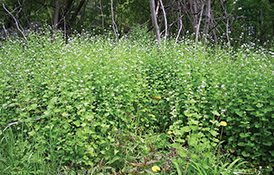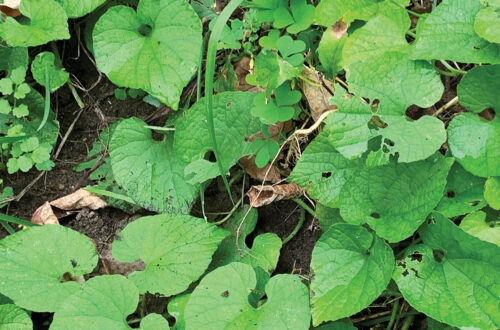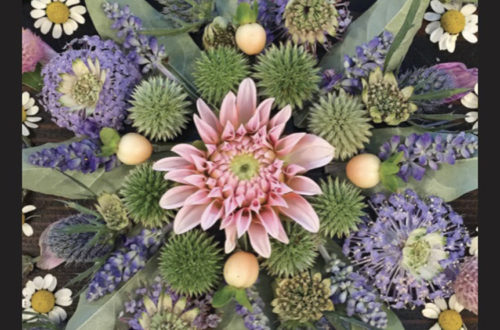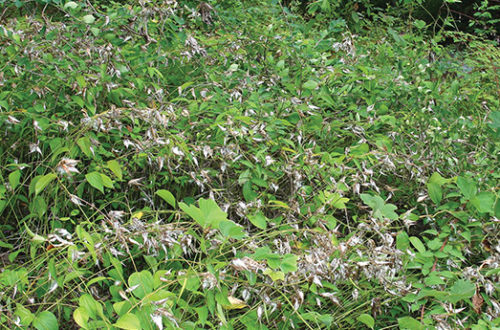JULY-AUG 2017 – Garlic mustard was first reported in the U.S. on Long Island in 1868. It was probably brought here for culinary and medicinal purposes. Its native range includes Europe and parts of Asia and Africa. One of the reasons it’s been so successful here is that its natural enemies are non-existent.
Garlic mustard (Alliaria petiolata) is considered invasive in Connecticut. It’s a cool-season biennial herb that starts growing before native plants break dormancy and dies back to brown stalks by mid-summer. It flowers from April to June. It reproduces via shiny black seeds that are held in slender green seed pods (siliques). It will self-fertilize if no pollinators are present.
Like most invasives, it’s an opportunist. It’s fast, aggressive, starts early and forms dense colonies.
Garlic mustard prefers moist, shaded floodplains, forests and roadsides but is adaptable to a wide range of soil and light conditions. Incursions are often seen on the edges of streams, forests, trails and roads.
Each plant can produce hundreds or even thousands of seeds, some of which may remain viable in the soil for five years. It can take over disturbed areas and spreads quickly by dominating the competition for light, water and nutrients. A population can double in four years.
The seeds are spread by water, wind, wildlife and people. White-tailed deer reportedly help it out by eating the native species they prefer and leaving the garlic mustard behind. It has displaced native spring wildflowers from large areas and reduces overall biodiversity.
Garlic mustard is allelopathic. It contains compounds that can adversely affect mycorrhizal fungi associated with native trees.
Some native butterflies (Pieris spp.) are impacted when garlic mustard displaces toothworts, also in the mustard family, its typical host plant. The butterflies lay their eggs in the garlic mustard but the larvae will eventually die because the foliage is poisonous to them.
Identification
In its first year, the plant is a low-growing rosette of kidney-shaped leaves with scalloped margins. It’s one of the first plants to show green growth and the rosettes remain green through the fall and winter.
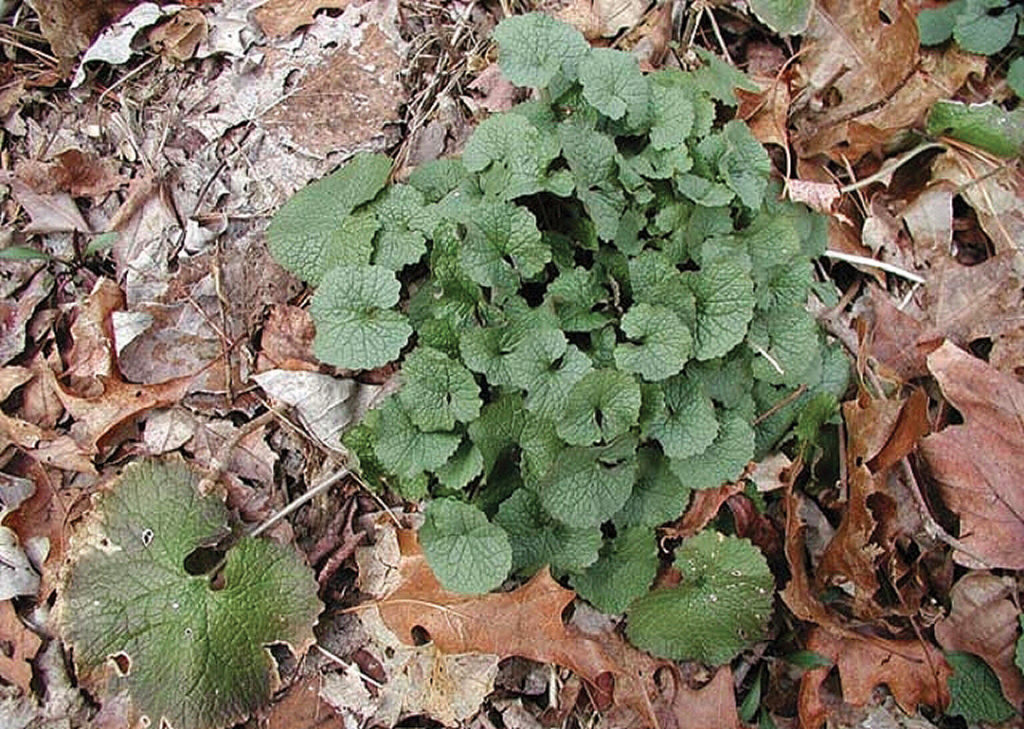
It is easier to identify in its second year when it grows to 1-4 feet. The leaves, now heart-shaped with toothed margins and pointed tips, are arranged alternately.
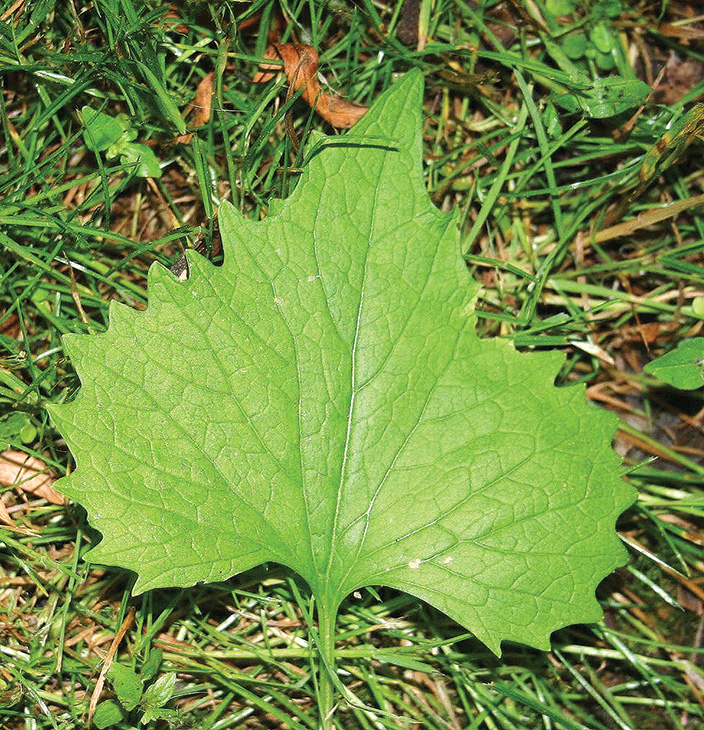
Larger infestations can be continuously cut back or mowed to prevent flowering and seed production. Solarization and burning are also options.
Second-year plants will have clusters of small (1/4 inch), four-petaled white flowers in April and May. Each flower has six stamens, four tall and two short. Slender seedpods or siliques are filled with a row of tiny seeds that turn black when mature.
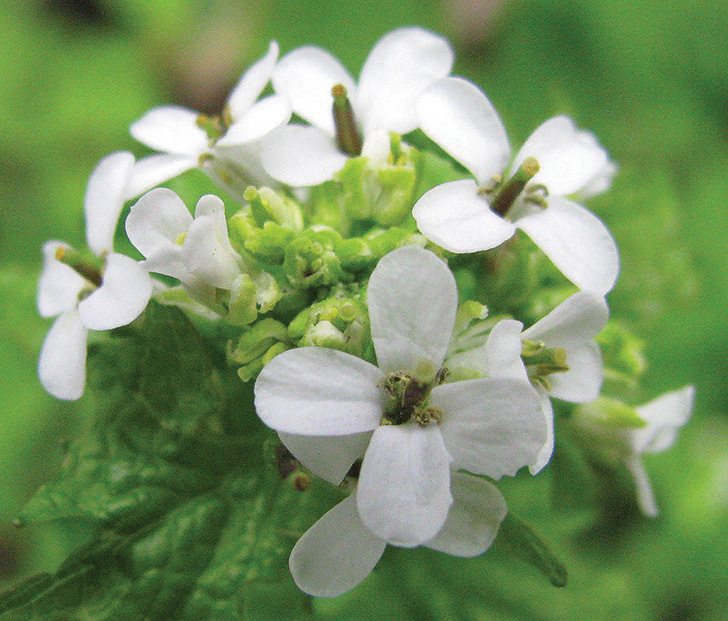
As you might expect, given its name, the above-ground parts of the plant, especially the leaves, emit a garlic odor when crushed. The odor is strongest in the spring and diminishes as the plant ages.
Look-alikes
The basal leaves resemble those of violet (Viola spp.) and early wood buttercup (Ranunculus abortivus).
Mechanical Control
Never let it flower and go to seed. Small infestations can be hand-pulled before seed set. It’s easier to pull when the ground is moist and the taproot may snap off if the ground is dry. Try to get as much as the taproot as you can to prevent a new stalk from forming. Bag what you pull, don’t use it for compost.
Garlic mustard is edible and it’s on the menu if you’re an invasivore.
Chemical Control
Garlic mustard is not tolerant of highly acidic soils.
Some sources recommend using a systemic herbicide, such as glyphosate, on large infestations prior to spring flowering. This would probably require reapplications. Since the herbicide application would be foliar, we would consider this only as a last resort.
Overview
Garlic mustard is one of only a few invasives that’s capable of dominating the understory of deciduous forests and woodlands.
In the process, it displaces a number of native spring wildflowers such as bloodroot (Sanguinaria canadensis), cutleaf toothwort (Cardamine concatenata), trilliums (Trillium spp.) and wild ginger (Asarum canadense).
It’s a substantial ecological threat capable of reducing biodiversity. For more information, go to the website of the Connecticut Invasive Plant Working Group at cipwg.uconn.edu
– Will Rowlands
